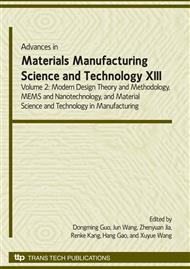p.227
p.233
p.239
p.245
p.251
p.257
p.263
p.269
p.275
Study on Plastics Optimal Separating Technology and Equipment Based on Resource-Conserving
Abstract:
A new optimal technology and process of separating plastic from domestic waste was presented according to the recycling benefit. An optimal analysis modal was established and the recycling benefit was analyzed. The technique and process of plastic separation was studied. As a result, the investment is much less than that of the synthetic recycling treatment and the recycling benefit is also higher. Depending on optimal separating technique and process, it can reclaim plastic that has high recycling value to a maximum in 15 separating type. A mathematical model of the separating process was established, and the effect of some parameters such as wind speed, sloping angle of airflow on the separating rate was studied; with an optimal 15 m/s wind-speed horizontally and 14-degree blowing angle, so that the rate of separating plastic is over 85%. Therefore, the enterprises can realize persistent development for a long run without government allowances.
Info:
Periodical:
Pages:
251-256
Citation:
Online since:
August 2009
Authors:
Keywords:
Price:
Сopyright:
© 2009 Trans Tech Publications Ltd. All Rights Reserved
Share:
Citation:


